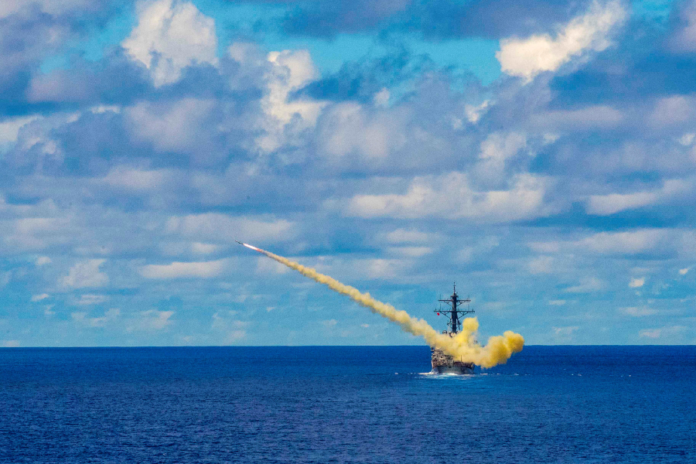In order to gain an advantage in the Pacific by extending the range of its front-line armaments and enabling American forces to operate farther from China, U.S. authorities seek to alter the chemical mixture that powers missiles and rockets.
By using more potent propellants and lighter warheads, the Pentagon and Congress are considering a retrofit that could increase some current weapons’ ranges by as much as 20%.
Last Monday, the Senate published bill language that included at least $13 million for the creation, testing, and development of “energetics,” or chemical substances that can be used to propel missiles or take the place of explosives in warheads.
Even though the funds represent a very modest percentage of the $886 billion military plan that Congress is presently discussing, they represent the start of a process that might ultimately lead to significant more spending on weapons.
Widespread bipartisan support exists for the effort to deter China, but the Republican-controlled House of Representatives and the Democratic-controlled Senate still need to agree on the idea’s ultimate funding levels.
US starts CL-20 project to counter China
US officials told the media that pending final approval in Congress, the measure would launch a Pentagon programme to try to increase the range of current weapons using chemicals like China Lake Compound #20, also known as CL-20.
One senior defence official claimed that CL-20, which was created by a federal facility in California back in the 1980s, is one of the most talked-about chemical substances under consideration. Congress has been drawn to studies like one from 2021 that claimed that, combined with other modifications, repowering a rocket with CL-20 might increase its range by around 20%.
New energetic materials, according to a study by the Energetics Technology Centre, give a 400-pound bomb “the same lethality as a current 1000-pound bomb,” and China develops “CL-20 on an industrial scale and built it into weapons systems.”
One of the primary manufacturers of CL-20 in the United States is Northrop Grumman Corp (NOC.N). Aerojet Rocketdyne, which L3Harris Technologies (LHX.N) just purchased, is the other major manufacturer of rocket motors.
According to the proposal, the Senate-designated monies would be used to create an energy materials office within the Department of Defence reporting to Kathleen Hicks, the deputy secretary of defence.
To avoid institutional red tape, the agency would serve as a coordinating body for the army, navy, and air force.
The Pentagon must implement the CL-20 pilot programme, which replaces either the explosive or propellant in three existing weapons, according to the House version of the yearly defence bill.
The House version does not mention any specific weapons, but according to Bob Kavetsky of the Energetics Technology Centre, long-range anti-ship missiles and extended-range air-to-surface missiles developed by Lockheed Martin (LMT.N) are candidates for the new chemicals. Other contenders are the Boeing (BA.N) Harpoon anti-ship missile and the Lockheed and RTX (RTX.N) Javelin anti-tank weapons.



